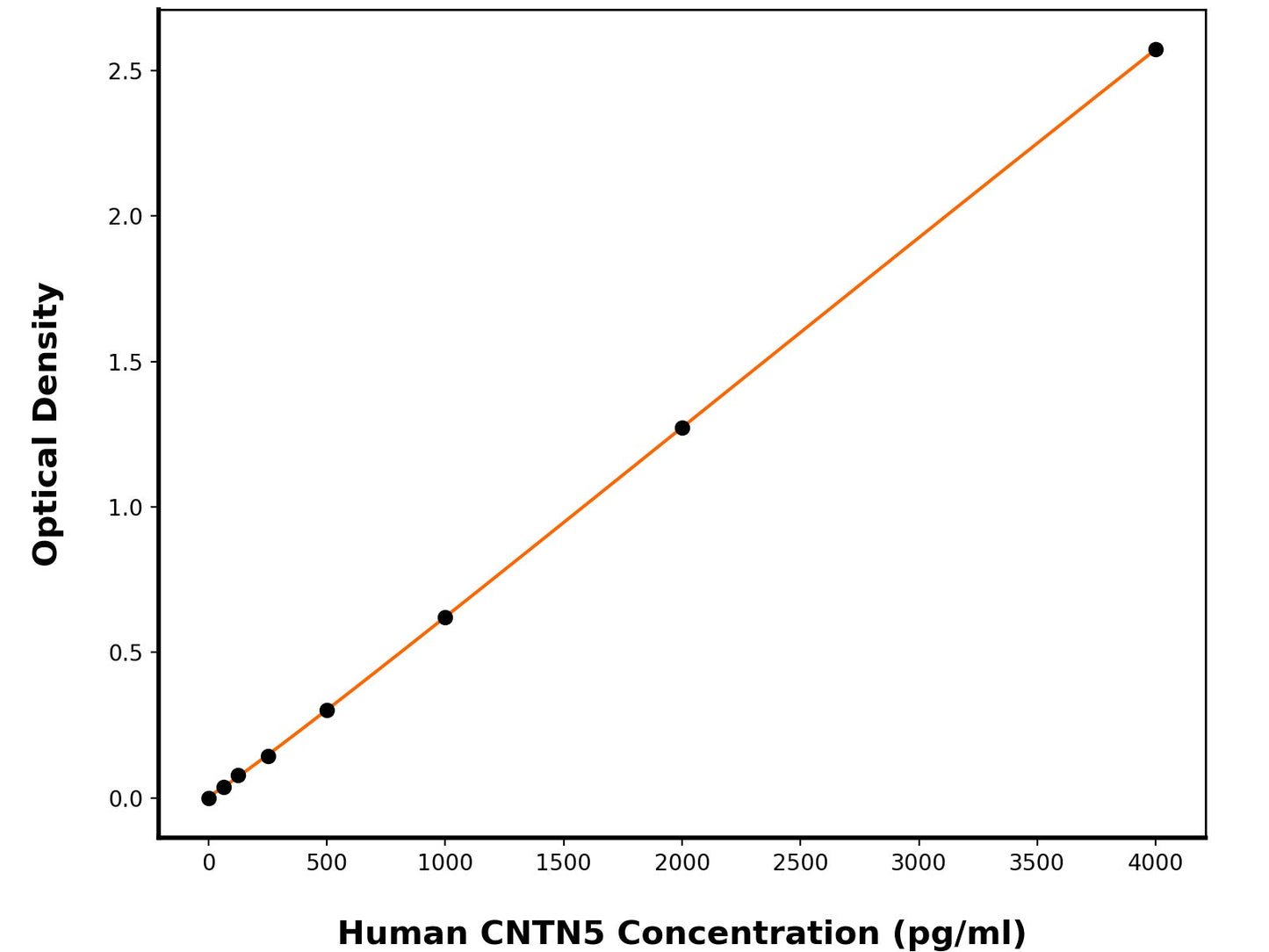1
/
of
1
Human Contactin-5 (CNTN5) ELISA Kit
Human Contactin-5 (CNTN5) ELISA Kit
This ELISA kit is designed to detect Human Contactin-5 (Human CNTN5). The assay plate has been pre-coated with mouse anti-Human CNTN5 monoclonal antibody. When the sample containing CNTN5 is added to the plate, it binds to the antibodies coated on the wells. Then, a horseradish peroxidase conjugated mouse anti-Human CNTN5 Antibody is added to the wells and binds to CNTN5 in the sample. After washing the wells, substrate solutions are added, and the color intensity is directly proportional to the amount of Human CNTN5 present. The reaction is stopped by adding an acidic stop solution, and the absorbance is measured at 450 nm.
Catalog No:
BPE100
Regular price
$754.00 USD
Regular price
$580.00 USD
Sale price
$754.00 USD
Unit price
/
per
2 weeks
Couldn't load pickup availability
Product Details
Species Reactivity
Human
Sensitivity
21.93 pg/mL
Detection Range
62.5-4000 pg/mL
Sample Type
Serum, plasma, cell culture supernates
Incubation(s)
3.5 hour(s)
Research Areas
Neuroscience
Background
Contactins are a subgroup of molecules belonging to the immunoglobulin superfamily that are expressed mainly in the nervous system. The subgroup consists of six members: Contactin-1, Contactin-2(TAG-1), Contactin-3(BIG-1), BIG-2, Contactin-5(NB-2) and NB-3. Since their identification in the late 1980s, Contactin-1 and Contactin-2 have been studied extensively. Axonal expression and the neurite extension activity of Contactin-1 and Contactin-2 attracted researchers to study the function of these molecules in axon guidance during development. Contactin-1 and Contactin-2 have come to be known as the principal molecules in the function and maintenance of myelinated neurons. In contrast, the function of the other four members of this subgroup remained unknown until recently. Contactin-5, also known as NB-2, is one of the neural recognition molecules in the contactin subgroup. Contactin-5 is expressed in brain and kidney and at very low level in placenta. In brain, Contactin-5 is highly expressed in the occipital lobe, amygdala, cerebral cortex, frontal lobe, thalamus and temporal lobe. Mice deficient in the Contactin-5 gene exhibit aberrant responses to acoustic stimuli. Contactin-5 may play a role in maturation of glutamatergic synapses in the brainstem during the final stages of auditory development. Contactin-5 gene may contribute to human neurological disorders.
Shipping Condition
Shipped on cold gel packs.
Storage Condition and Shelf Life
This product can be stored at 2-8C.
Analyte
Contactin-5
Regulatory Status
For Research Use Only

